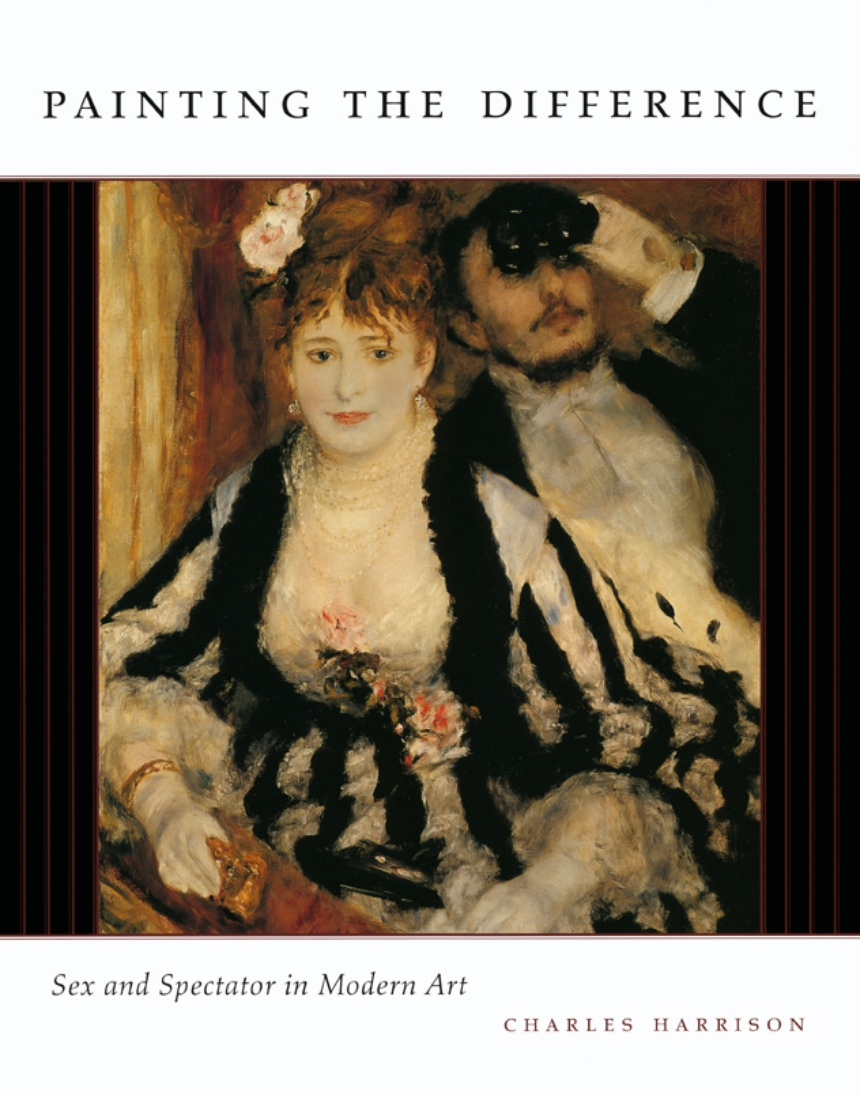Painting the Difference
Sex and Spectator in Modern Art
The picture plane of a painting creates boundaries and perspectives. It governs the relationship of daubs of pigment on a canvas to reality, allowing the viewer to connect with the imagined world of a work of art. Charles Harrison’s latest endeavor, Painting the Difference, explores the role of the picture plane in modern painting and the relationships it creates among the artist, the subject, and the spectator. One of the most respected teachers and theorists of modern art, Harrison here offers a bold interpretation of the Modernist canon that uncovers the significance of gender to the functioning of the picture plane.
Arguing that the representation of women in art was crucial to the character of modernity, Harrison traces the history of female subjects as they began to gaze out of the picture to confront and engage their viewers. Combining sweeping conceptual history with telling investigations into the details of particular paintings, Painting the Difference deciphers the implications of sexual difference for the development of nineteenth- and twentieth-century art. Harrison shows how artists, reflecting the underlying anxieties of the time about gender, used female subjects’ gazes both to create a sexualized relationship between these subjects and their viewers, and to simultaneously question that relationship. In considering works by artists such as Renoir, Manet, Degas, Cézanne, Picasso, and Matisse, as well as Rothko, Warhol, Cindy Sherman, and many more, Harrison incorporates elements of cultural criticism and social history into his arguments, and generous color illustrations permit the reader to test Harrison’s claims against the works on which they are based. Rich with detail and compelling analysis, Painting the Difference offers cutting-edge interpretation grounded in the reality of magnificent works of art.
Arguing that the representation of women in art was crucial to the character of modernity, Harrison traces the history of female subjects as they began to gaze out of the picture to confront and engage their viewers. Combining sweeping conceptual history with telling investigations into the details of particular paintings, Painting the Difference deciphers the implications of sexual difference for the development of nineteenth- and twentieth-century art. Harrison shows how artists, reflecting the underlying anxieties of the time about gender, used female subjects’ gazes both to create a sexualized relationship between these subjects and their viewers, and to simultaneously question that relationship. In considering works by artists such as Renoir, Manet, Degas, Cézanne, Picasso, and Matisse, as well as Rothko, Warhol, Cindy Sherman, and many more, Harrison incorporates elements of cultural criticism and social history into his arguments, and generous color illustrations permit the reader to test Harrison’s claims against the works on which they are based. Rich with detail and compelling analysis, Painting the Difference offers cutting-edge interpretation grounded in the reality of magnificent works of art.
312 pages | 50 color plates, 130 halftones | 8 1/2 x 11 | © 2005
Reviews
Table of Contents
List of Illustrations
Introductions and Acknowledgments
I. Looking Out, Looking In
1. The Picture Plane
2. Renoir
II. Fantasy and Imagination
3. Manet
4. Cézanne
III. Modern Feeling
5. Degas, Part One
6. Degas, Part Two
7. Morisot and Cassatt: "A Woman’s Painting"
IV. Public and Private
8. The Early Twentieth Century
9. Picasso
10. Matisse and Bonnard: "Painting the Emotions"
V. Painting the Unseen
11. Rothko
12. The Later Twentieth Century
Notes
Figure Credits
Index
Introductions and Acknowledgments
I. Looking Out, Looking In
1. The Picture Plane
2. Renoir
II. Fantasy and Imagination
3. Manet
4. Cézanne
III. Modern Feeling
5. Degas, Part One
6. Degas, Part Two
7. Morisot and Cassatt: "A Woman’s Painting"
IV. Public and Private
8. The Early Twentieth Century
9. Picasso
10. Matisse and Bonnard: "Painting the Emotions"
V. Painting the Unseen
11. Rothko
12. The Later Twentieth Century
Notes
Figure Credits
Index
